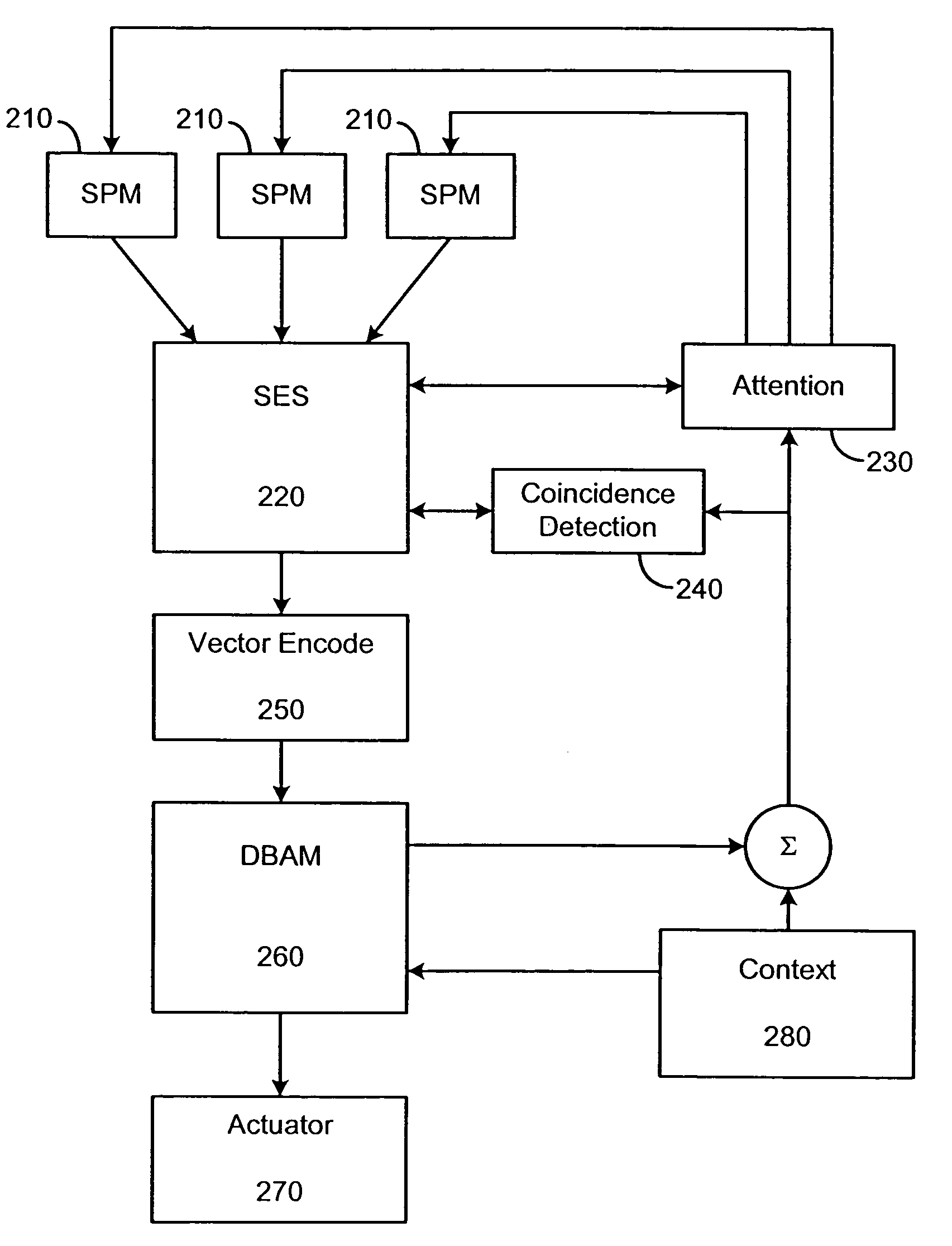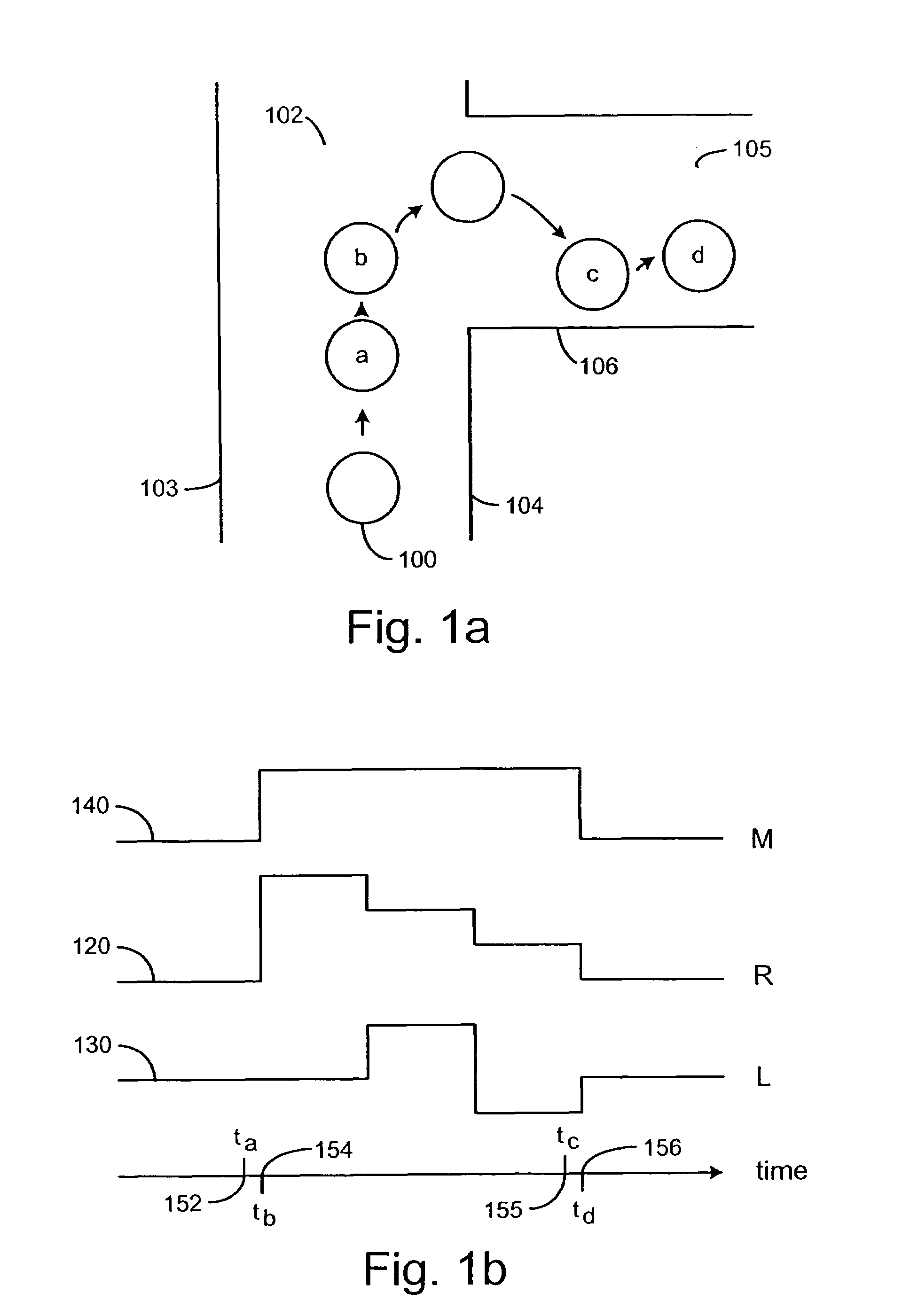Architecture for multiple interacting robot intelligences
a robot intelligence and intelligent technology, applied in the field of intelligent machines, can solve the problems of complex task of building an adaptive autonomous robot, difficult training, and three tasks or behaviors considered to be the most difficult in robotics
- Summary
- Abstract
- Description
- Claims
- Application Information
AI Technical Summary
Benefits of technology
Problems solved by technology
Method used
Image
Examples
Embodiment Construction
[0035]An adaptive autonomous robot must be capable of sensing and interacting with its environment. Therefore, a robot must include sensors and actuators. A sensor is any device capable of generating a signal that can be mapped to a characteristic of the environment. A sensor may be a proprioceptive sensor that measures an internal aspect of the robot such as, for example, the angle formed by two members at a joint or the angular speed of a motor shaft. A sensor may be an exteroceptive sensor that measures an aspect external to the robot such as, for example, the intensity of light from a direction or the presence of a force applied to the robot. An actuator is any device enabling the robot, in whole or in part, to perform an action. In addition to sensors, actuators, and mechanical support structures, a robot must have one or more computers capable of receiving signals from the sensors, transmitting commands to the actuators, and executing one or more programs. The present inventio...
PUM
 Login to View More
Login to View More Abstract
Description
Claims
Application Information
 Login to View More
Login to View More - R&D
- Intellectual Property
- Life Sciences
- Materials
- Tech Scout
- Unparalleled Data Quality
- Higher Quality Content
- 60% Fewer Hallucinations
Browse by: Latest US Patents, China's latest patents, Technical Efficacy Thesaurus, Application Domain, Technology Topic, Popular Technical Reports.
© 2025 PatSnap. All rights reserved.Legal|Privacy policy|Modern Slavery Act Transparency Statement|Sitemap|About US| Contact US: help@patsnap.com



